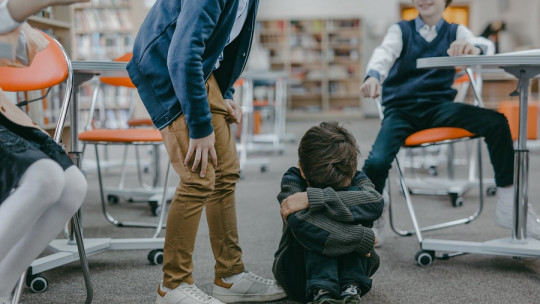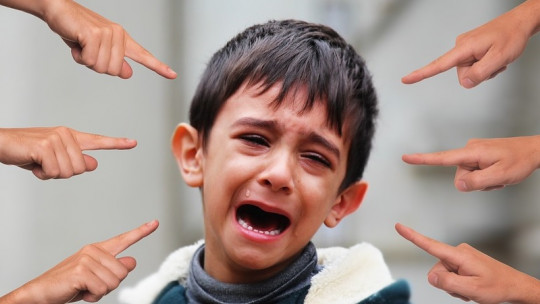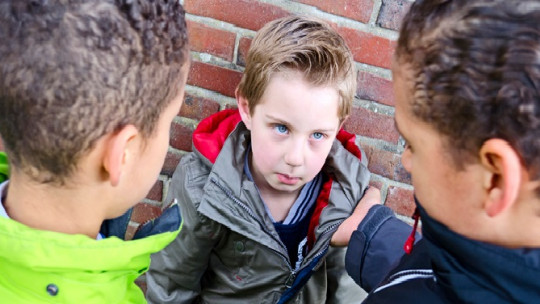There are more and more cases of bullying in educational centers Unfortunately, many times we find that the school or institute intervenes little or not at all. In these cases, as a father or mother, the feeling of helplessness is very natural, since it is surely the first time we have encountered this and we do not know how we should act.
It is very important to be clear about all the agents that participate in a case of bullying, since not everything is reduced to the relationship between aggressor and victim. In a case of bullying we will find the figure of the victim (that is the person who receives the attacks of bullying), the figure of the aggressor (that person who has harassing behavior towards the victim), the family (both the family of the figure of the aggressor and the victim), the classmates (both the figure of the aggressor and the victim), the teaching team and the management team of the educational center. All of these figures can and should contribute to ending the harassment situation.
Often, those who tend to move and try to find solutions are the parents of the harassed person. We must be clear that The family of the person who attacks must also act since if your child is engaging in bullying behavior, surely there is also a lot of emotional discomfort in him/her and furthermore, we cannot allow another person to also suffer unfairly because of it.
We’ll see now some keys to know how to act, whether you are the parent of the person who attacks or the person who is attacked
What can I do as a parent of the victim in case of bullying?
These are the most effective measures you can take:
1. Do not encourage aggression or revenge
There have been many cases in which the victim ends up developing harassing behavior in a vindictive manner. It is necessary to show empathy with the frustration they feel and enhance coping strategies alternatives to aggression.
2. Communication and listening
Many times they do not tell what they are experiencing. It is important to help them break the silence and let them know that this situation should not be hidden. You need to listen to them without judging them ask them open questions so that they can express as much as possible and let them know that the situation can be fixed.
3. Offer emotional support and avoid feelings of guilt or shame
It is essential to offer this emotional and unconditional support We won’t tell her to try to solve it on his behalf, if she could she would have done it already. As parents, we must avoid feeling guilt or shame for what may be happening to our child, as it will make it difficult for us to address the problem effectively. We will teach him to assert his rights and promote his self-esteem.
4. Avoid reproaches and nerves
Let us act safely and calmly; Our son/daughter now needs confidence, security and to be able to reduce his/her level of anxiety or anguish Knowing that their parents will not act impulsively or without consulting them will give them exactly the security they need.
5. Firm and positive coping attitude
Without forcing anything or forcing any situation so as not to generate greater fear, must be made to see the need to address the situation showing determination and positivity in the process.
6. Know what you have tried to do so far and what you want to do
Let’s not make any decision without deciding it together with our son/daughter. We must know what he/she has tried so far and what has worked and what has not
7. Make a personal diary
Suggest writing a diary It will help you better elaborate and digest what you are experiencing In addition, it will help us to be able to record all the details and have evidence and information in case it is necessary to prove it later.
8. Request intervention from the educational center
Any educational center, faced with a case or suspicion of bullying, is absolutely obliged to implement the protocol prevention, detection and intervention of bullying. In the event that the educational center does not implement the protocol, the next step is to go to the inspection services. And in serious cases, where no means of resolution is found, go to Justice.
9. Seek professional support
If your child expresses emotional discomfort or, in very serious cases, ideas of self-harm, you should go to a psychologist to be able to offer professional support.
10. Do not adopt a passive attitude
Under no circumstances will we think that the best thing is to do nothing If we do something, it will not aggravate the problem, it will always bring us closer to ending this unfair and painful situation that our child is experiencing.
What can I do as the parent of the aggressor?
Follow these tips to help them stop this type of harassment.
1. Accept and assume your child’s behavior
As much as it hurts to accept that your child is having harassing behavior towards another classmate, assuming and accepting it is not going to turn him or her into a lifelong aggressor nor is it going to be harmful. If we really want to protect and care for him, Let’s put an end to harassing behavior and address the reasons that lead you to attack an equal of yours
2. Communication
You have to talk directly about the topic and what is happening. Let’s understand why our son/daughter is having these behaviors. Above all, let us act calmly and without getting carried away by impulses We must listen to him/her and he/she listens to us too.
3. Consequences, behavior control, damage repair and finality
You should know that the family does not tolerate or accept violent behavior, the possible consequences of this behavior must be explained and it must be made clear that this situation must end. We must encourage the aggressor to apologize to the harassed and repair any possible damage caused
4. Stimulate empathy and prosocial behavior
Teach him to practice positive behaviors and reinforce them. Let them know that their family values prosocial behaviors and that they can empathize with their peers and peers. Let’s analyze with him/her the harmful consequences of this situation for both him/her and the victim.
5. Be models of empathy and prosocial behavior
We must be models of positive behavior , and it is very important that we can offer it to you; either ourselves, other colleagues or other people whose behavior it is positive for us to pay attention to. Let us remember that parents are the main reference for your child.
6. Behavior monitoring
It is important that once the harassment situation has been addressed, the evolution of the aggressor’s behavior can be monitored. It may be beneficial to speak with the tutor or psychologist at the educational center
7. Request support from the educational center
It is very important that the family of the person who bullies also requests that the prevention, detection and intervention protocol for bullying be activated in the educational center and that the family can actively participate in it
8. Seek professional support
It may be that the bullying behaviors are the result of a projection of a lot of anger that our child has accumulated, feelings of insecurity or inferiority, low tolerance for frustration, lack of empathy, low social skills, having an experience as a victim of bullying. school. In any case, it is very important that you have professional support from a psychologist who can offer you to improve your emotional well-being.
In conclusion:
Remember that in any case of bullying or suspicion of it, we must act whoever we are, since pain and suffering are not part of the academic curriculum.









